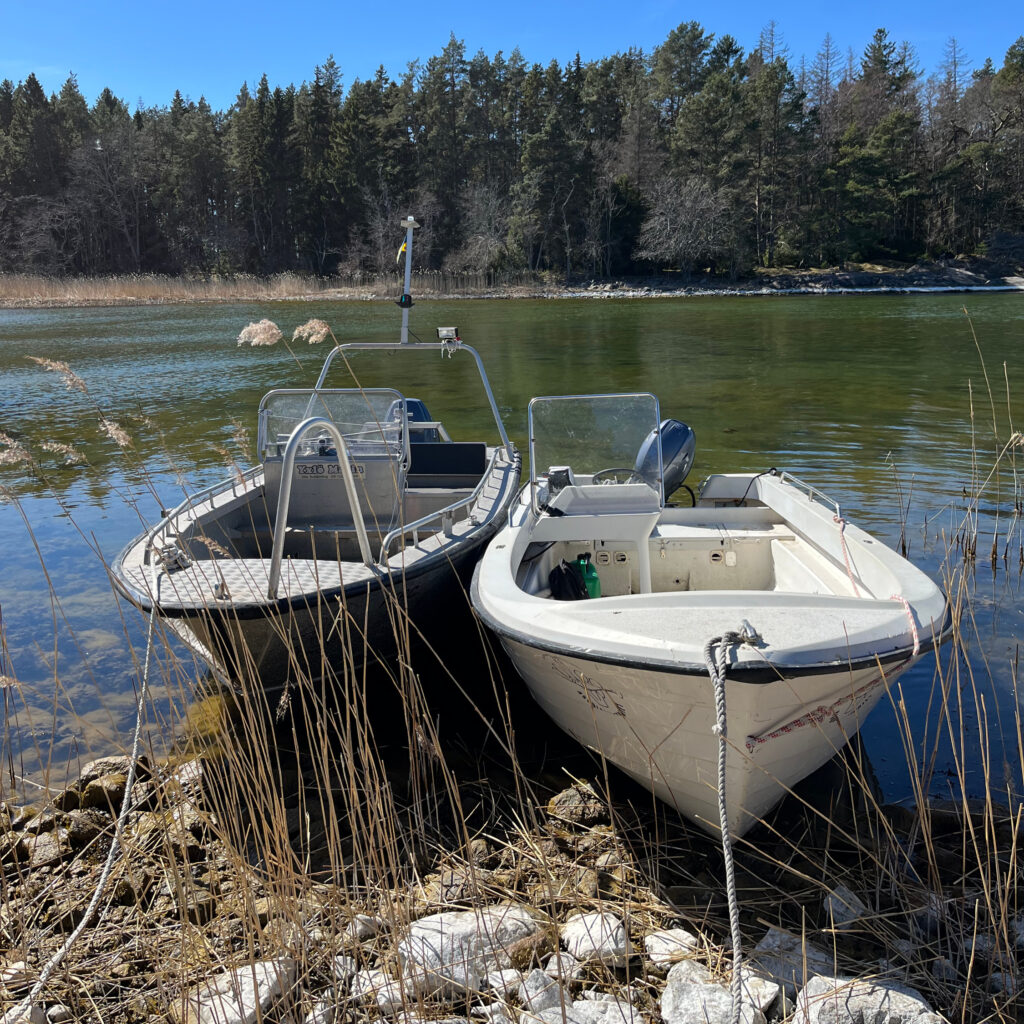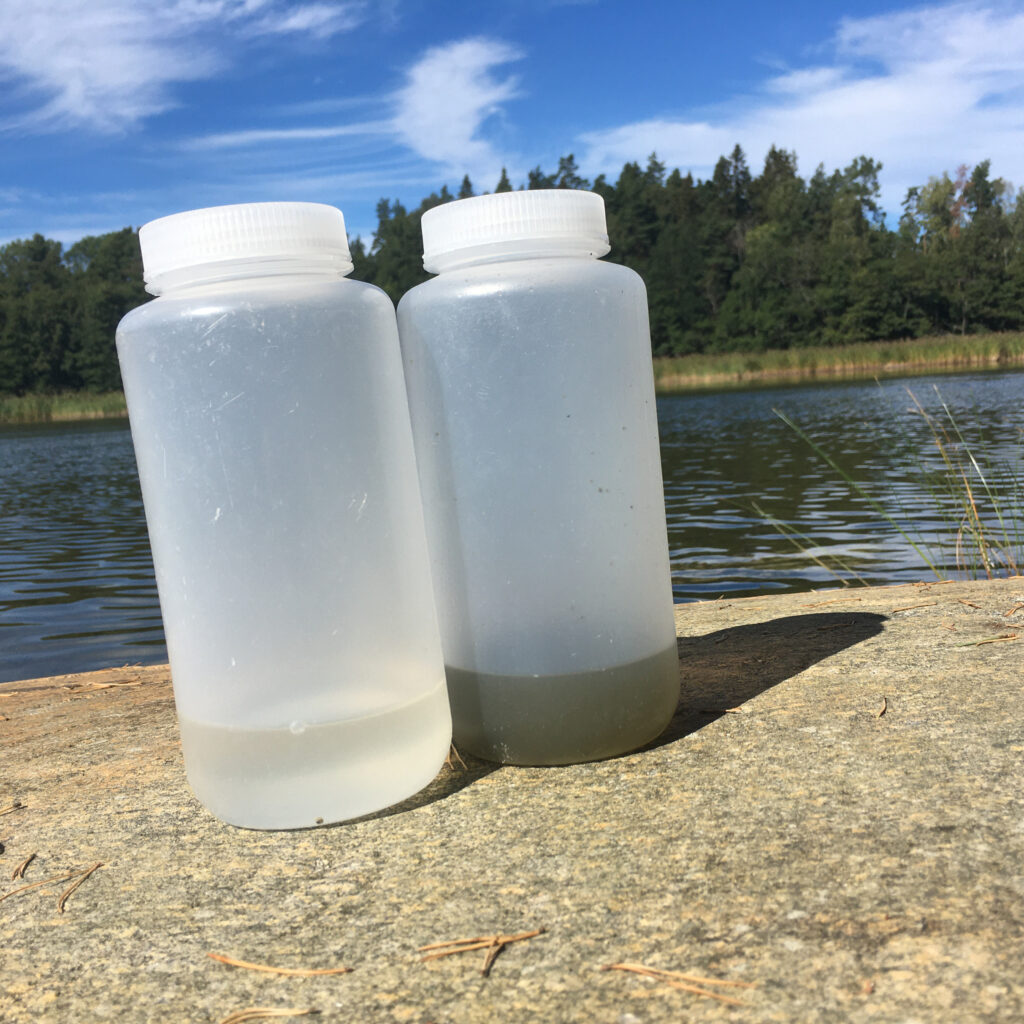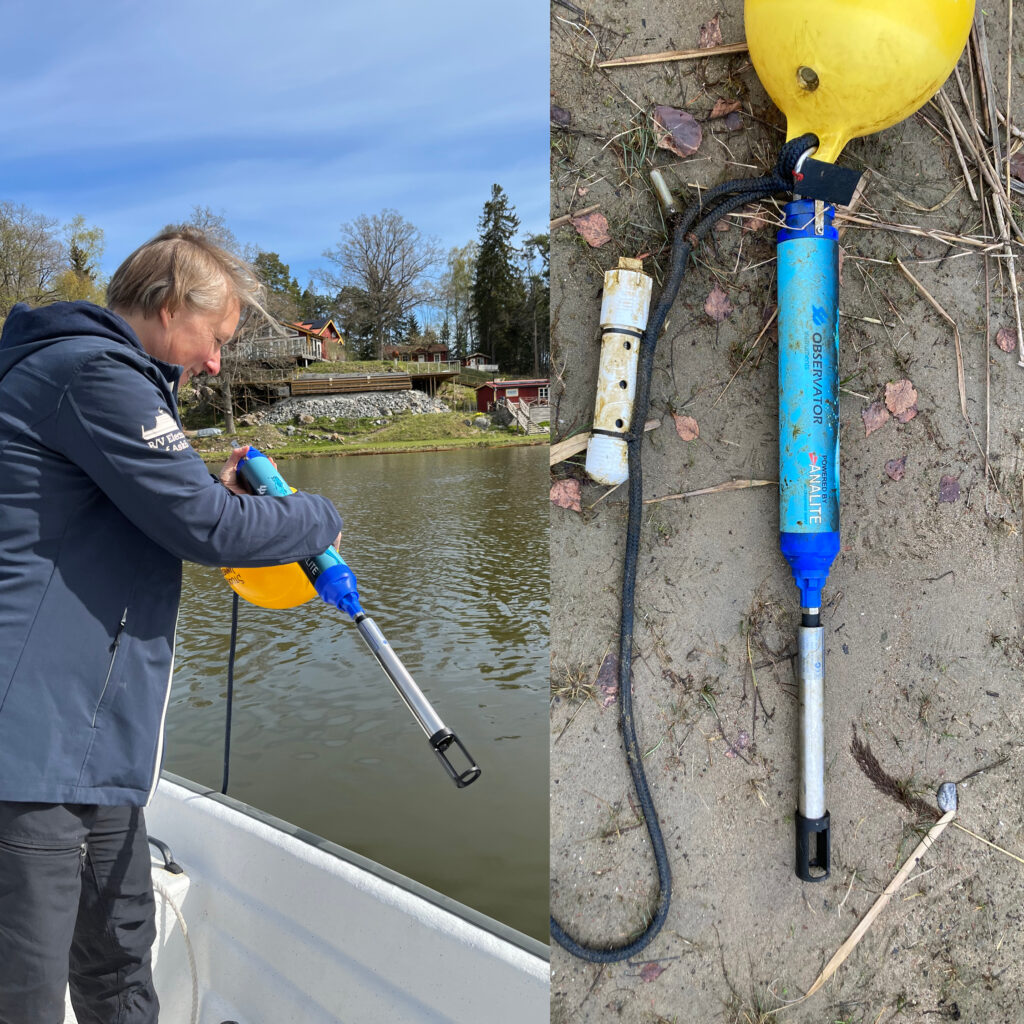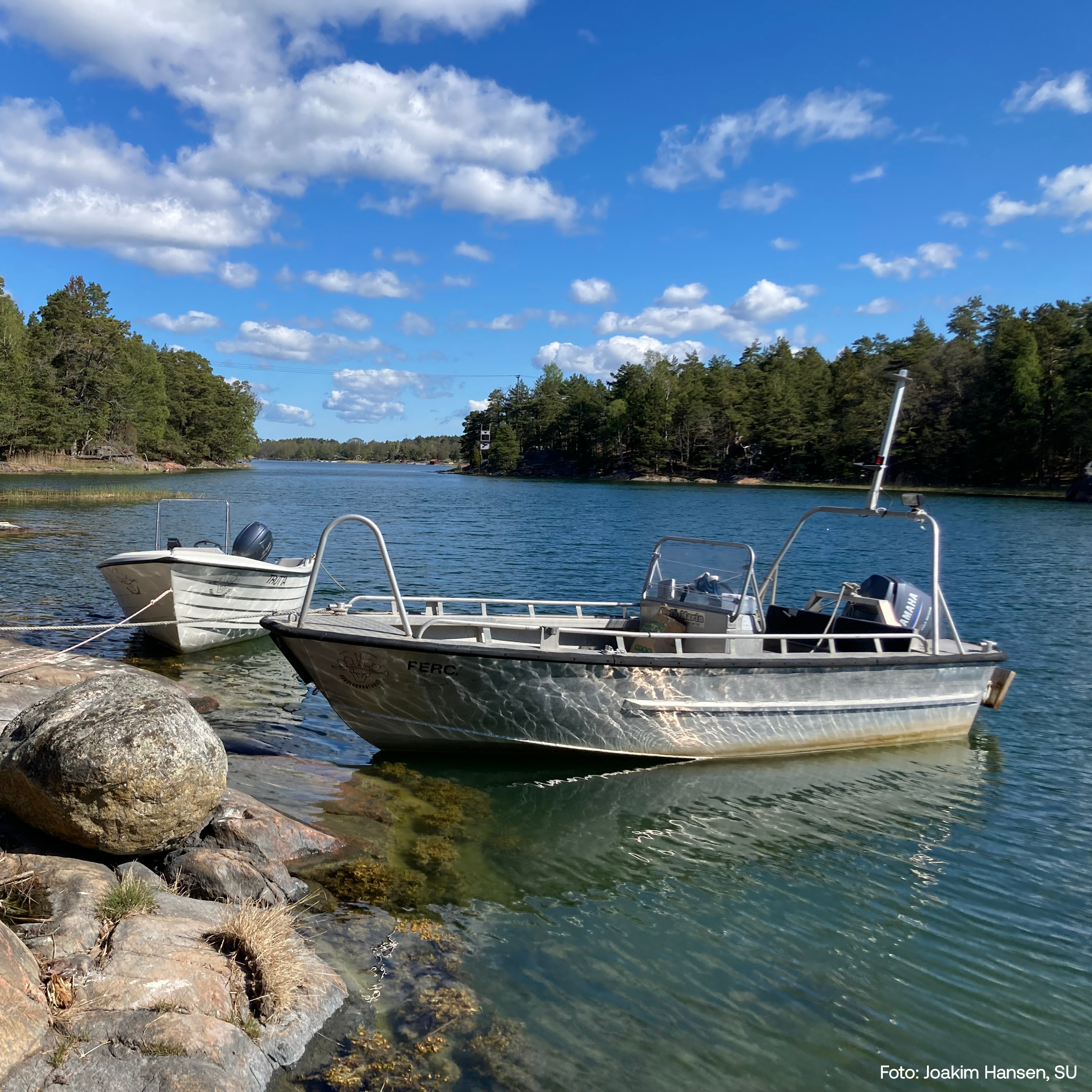It’s finally time to get your boat ready for the summer season! Many boaters are certainly looking forward to enjoying the sea, but what is the actual impact of recreational boating on the Baltic Sea environment? What can boaters do to contribute to more sustainable boating? This is something the Thriving Bays project is investigating in a case study. The case study will continue in 2023, but the researchers can already give simple, practical recommendations to boat owners.
Cloudy water in the shallow bays of the Baltic Sea is a recognised problem. One of the causes of turbidity can be recreational boats. You may have noticed that a brown-black cloud can form in the water behind your boat after you hit the gas. This is the bottom being stirred up, but how much recreational boats stir up particles from the bottom and how this turbidity affects the coastal environment has not previously been researched. Until now. The case study on the impact of small boats on turbidity, which is one of several case studies in the Thriving Bays project, is currently underway in a selection of bays along the Svealand coast.
– We want to investigate how much small boats contribute to turbidity and release of nutrients to the water and thus how much environmental impact the boats have in relation to other factors, such as wind-generated turbidity and turbidity caused by eutrophication. The results will contribute knowledge to potential measures in the restoration of heavily impacted shallow bays within the Living Bays project, says Joakim Hansen, environmental analyst at Stockholm University’s Baltic Sea Centre and one of the researchers in the project.

There is a lot to consider in the surveys, including the type of boat being operated, engine power, how the boat is operated, the depth and the type of bottom. All this has been shown to affect the extent of the turbidity and how long it takes for the turbidity to settle on the bottom again. The case study uses boats that are common in shallow bays, 4-6 metre boats with engines of 8-100 hp. The effects of a larger boat, 11 metres with 440 hp, have also been investigated. Photo: Frida Tornberg, BalticWaters.
Impact of turbidity on the environment and people
One of the most biologically rich natural environments in the Baltic Sea coastal area is the shallow bays. With abundant bottom vegetation, they are important spawning and nursery grounds for several fish species that swim in from more open coastal areas to lay their eggs in the warmer water. However, if benthic vegetation becomes sparse or disappears altogether, it can have consequences for fish communities and the entire local ecosystem. This is because benthic vegetation serves more than just as a nursery for fish.
– Aquatic plants bind sediments, prevent erosion, and absorb and store nutrients that would otherwise fuel eutrophication symptoms,” says Joakim.
In addition to being full of life in the form of fish, small animals, algae and aquatic plants, which are important to protect, the bays are also of great importance to us humans. We have long used the wave-protected bays as marinas and recreational areas. And the trend seems to be continuing upwards.

Water samples before (left container) and after (right container) a boat passed by. Photo: Joakim Hansen, Stockholm University Baltic Sea Centre.
The number of piers and marinas is increasing as more and more people move to the coast. More boats are travelling in the archipelago and more boats also mean a greater risk of stress to the coastal environment.
– Continuous turbidity and sedimentation of particles on leaves can result in aquatic plants being shaded from the sun’s rays, making it difficult for them to survive. The turbidity can also release nutrients bound in the bottom sediments. When there is a lot of nutrients in the water, plankton growth can be favoured, which also makes the water turbid and can shade out the bottom vegetation. And it’s not just the environment that is affected by turbid water, it’s not as pleasant for us humans who spend time on the coast, says Joakim.
How to drive a boat more sustainably and gently
It is easy to be overwhelmed by the information on all the environmental challenges we face. But when it comes to the impact of recreational boating and what an individual can do, there are now recommendations based on the preliminary results of the research. Because it is easy to avoid and reduce turbidity. It’s all about driving gently. By starting and accelerating gently, raising the engine and driving smoothly at a low, steady speed of a couple of knots, the worst turbidity is avoided.
– It is mainly the shallow bottoms in wave-protected areas that are sensitive. Small open 5 metre boats stir up sediment down to a depth of about two metres. Slightly larger motorboats affect the sediments somewhat deeper, perhaps down to 4-5 metres. It is best if you can avoid driving over muddy bottoms below 1.5 metres, explains Joakim.
In addition to reducing turbidity, the gentler way of driving, known as ‘eco-driving’, can also help to reduce the boat’s fuel consumption.
Future research
In 2023, the case study research will continue. This time Joakim, together with the other Living Bays researchers, will focus on the long-term effects of turbidity, i.e. how turbidity behaves over a longer period of time and in relation to other factors that cause turbidity. Different weather conditions will be taken into account, as wind and rain can also contribute to water turbidity. The study will require continuous measurement of turbidity on different days of the week and at different times of the day, to see if it differs depending on the intensity of boat traffic and how long the turbidity is elevated.
For the rest of us, the preparations for this year’s launch and the longing for the warm rocks and sparkling sea continue. We take with us the knowledge of how gentle driving behaviour can contribute to more sustainable boating.

A logger that continuously measures water turbidity will be an important instrument in the 2023 surveys. Here Linda Kumblad, SU/BalticWaters, places a logger in a shallow bay. Photo: Joakim Hansen, Stockholm University Baltic Sea Centre.
Want to know more about how a survey works? Read the article How do motorboats affect the shallow bays of the Baltic Sea? and check out TV4’s feature Rough boating can lead to murky water: worse for the environment.

More about the project Thriving Bays
The aim of the Thriving Bays project is to try to show that it is possible to improve the environment in shallow bays and to develop knowledge about how this can be done in a cost-effective way. The project will work to test and evaluate individual measures in a number of case studies, and full-scale restoration in some shallow bays along the Svealand coast will be carried out. Living Bays runs until 2027 and is implemented and financed by BalticWaters in close cooperation with, and with financial support from, Stockholm University and the Stockholm County Administrative Board. The Swedish Agency for Marine and Water Management (HaV) has allocated funds to Stockholm University for the implementation of sampling and monitoring in the project bays. A total of just over SEK 45 million is being invested in the project.

